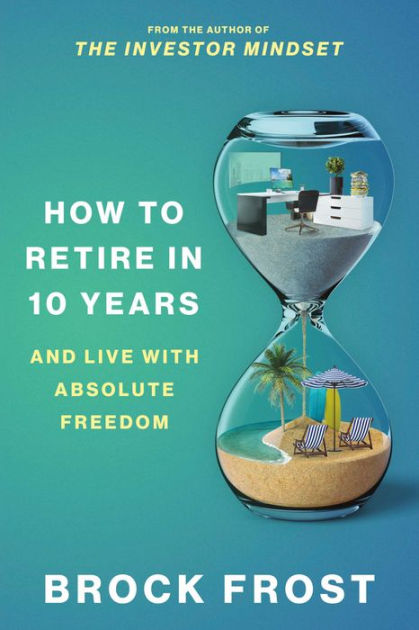Setting Your Retirement Goals
Retiring in 10 years may seem like a daunting task, but with proper planning and goal setting, it can be achievable. The first step in planning for retirement is to set clear goals for what you want your retirement to look like. Consider factors such as where you want to live, how much money you will need to live comfortably, and what activities you want to pursue during retirement. By setting specific and measurable goals, you can create a roadmap for achieving them within the 10-year timeframe.
Once you have set your retirement goals, it’s important to assess your current financial situation. This includes calculating your net worth, analyzing your income and expenses, and determining how much you are currently saving for retirement. By understanding where you stand financially, you can better plan for the future and make necessary adjustments to reach your retirement goals in 10 years.

In addition to financial goals, it’s also important to consider your lifestyle goals for retirement. Think about what you want to do with your time once you retire, whether it’s traveling, volunteering, starting a new hobby, or spending more time with family. By aligning your financial and lifestyle goals, you can create a comprehensive retirement plan that will set you up for success in 10 years.
Maximizing Your Savings
One of the key components of retiring in 10 years is maximizing your savings. This means saving as much money as possible each year to ensure you have enough funds to live comfortably in retirement. Start by contributing the maximum amount to your employer-sponsored retirement accounts, such as a 401(k) or 403(b). These accounts offer tax advantages and allow your money to grow over time through investments.

In addition to employer-sponsored retirement accounts, consider opening a separate retirement savings account, such as an IRA or Roth IRA. These accounts offer additional tax benefits and flexibility in how you invest your money. By contributing to multiple retirement accounts, you can diversify your savings and maximize your potential earnings over the next 10 years.
Another way to maximize your savings is to cut unnecessary expenses and increase your income. Look for ways to reduce your monthly bills, such as canceling unused subscriptions or refinancing high-interest debt. You can also consider taking on a side hustle or freelance work to boost your income and put more money towards your retirement savings. By making small sacrifices now, you can set yourself up for a more secure retirement in 10 years.
Investing for the Future

Investing is a crucial part of retiring in 10 years, as it allows your money to grow over time and generate additional income for retirement. When investing for retirement, it’s important to diversify your portfolio to reduce risk and maximize returns. Consider investing in a mix of stocks, bonds, and other assets that align with your risk tolerance and financial goals.
Another important aspect of investing for retirement is to regularly review and adjust your investment strategy as needed. This may involve rebalancing your portfolio, reallocating assets, or seeking professional advice from a financial advisor. By staying informed and proactive with your investments, you can optimize your returns and build wealth for retirement in 10 years.
In addition to traditional investments, consider exploring alternative investment options, such as real estate, peer-to-peer lending, or starting a small business. These options can offer higher returns and diversification outside of the stock market. However, be sure to thoroughly research and understand the risks associated with alternative investments before committing your money.
Creating a Retirement Budget
Creating a retirement budget is essential for planning how you will spend your money once you retire. Start by estimating your expected expenses in retirement, such as housing, healthcare, food, and entertainment. Consider any additional expenses you may have, such as travel or hobbies, and factor them into your budget.
Next, calculate your expected retirement income, including Social Security benefits, pension payments, investment income, and any other sources of income. Compare your estimated income to your expenses to determine if you will have enough money to cover your costs in retirement. If there is a shortfall, consider ways to increase your income or reduce your expenses to make your budget work.
It’s also important to account for inflation and unexpected expenses in your retirement budget. Plan for rising costs over time and build a cushion for emergencies or unforeseen circumstances. By creating a detailed and realistic retirement budget, you can better prepare for the financial challenges of retiring in 10 years and ensure a comfortable lifestyle in your golden years.
Considering Healthcare Costs
One of the biggest expenses in retirement is healthcare, so it’s important to plan for these costs when retiring in 10 years. Start by estimating your healthcare expenses in retirement, including insurance premiums, deductibles, copays, and out-of-pocket costs. Consider any chronic conditions or health issues that may require ongoing medical care and factor them into your budget.
When planning for healthcare costs, be sure to explore Medicare options and other insurance policies that can help cover your medical expenses in retirement. Understand what is covered by Medicare, how much you will need to pay out of pocket, and if you need supplemental insurance to fill any gaps in coverage. By researching your healthcare options early, you can make informed decisions about your healthcare needs in retirement.
In addition to insurance, consider ways to stay healthy and prevent costly medical issues in retirement. Stay active, eat a balanced diet, get regular check-ups, and prioritize your mental health to reduce your risk of chronic conditions and healthcare expenses. By taking care of your health now, you can potentially lower your healthcare costs in retirement and enjoy a higher quality of life.
Building a Social Security Strategy
Social Security benefits can be a valuable source of income in retirement, but it’s important to have a strategy for maximizing your benefits when retiring in 10 years. Start by understanding how Social Security works, including when you can start receiving benefits, how your benefit amount is calculated, and how to maximize your benefits based on your work history.
One strategy for maximizing Social Security benefits is to delay claiming benefits until full retirement age or even later. By waiting to claim benefits, you can increase your monthly benefit amount and potentially receive larger payments over the course of your retirement. Consider your financial needs and health status when deciding when to start claiming Social Security benefits.
Another strategy is to coordinate Social Security benefits with your other sources of income, such as pensions, retirement accounts, and investment income. By strategically timing when you claim benefits and how you use your other income sources, you can optimize your overall retirement income and minimize taxes. Work with a financial advisor or use online tools to help you create a Social Security strategy that aligns with your retirement goals.
Planning for Long-Term Care
As you plan for retirement in 10 years, it’s important to consider the possibility of needing long-term care in the future. Long-term care can include services such as nursing home care, assisted living, and in-home care for chronic conditions or disabilities. These services can be expensive and may not be covered by Medicare or other insurance policies, so it’s important to plan ahead for these potential costs.
Start by researching long-term care options in your area and understanding the costs associated with different types of care. Consider purchasing long-term care insurance to help cover these expenses in retirement. Long-term care insurance can provide financial protection and peace of mind knowing that you will have access to quality care if needed.
Another option is to set aside a separate savings fund for long-term care expenses. By earmarking money specifically for long-term care, you can ensure that you will have the resources to cover these costs without sacrificing your other retirement goals. Work with a financial advisor to determine the best approach for planning for long-term care and how it fits into your overall retirement strategy.
Adjusting Your Retirement Plan
Retiring in 10 years requires flexibility and adaptability as you navigate changes in the economy, financial markets, and your personal circumstances. It’s important to regularly review and adjust your retirement plan to ensure that you are on track to meet your goals. This may involve making changes to your savings rate, investment strategy, budget, or retirement age based on new information or unexpected events.
Consider working with a financial advisor to help you monitor your progress and make informed decisions about your retirement plan. An advisor can provide valuable insights, recommendations, and strategies to help you stay on course and adjust to any changes that may impact your retirement goals. Be open to feedback and guidance from professionals who can help you make the most of your retirement savings and investments.
In addition to financial adjustments, be prepared to make lifestyle changes as needed to support your retirement goals. This may involve downsizing your home, cutting back on expenses, or finding new ways to generate income in retirement. By staying proactive and flexible in your approach to retirement planning, you can overcome challenges and stay on track to retire in 10 years with confidence.
Conclusion
Retiring in 10 years requires careful planning, diligent saving, and strategic decision-making to ensure a comfortable and secure future. By setting clear goals, maximizing your savings, investing wisely, and creating a comprehensive retirement plan, you can position yourself for success in reaching your retirement goals within the 10-year timeframe. Consider factors such as healthcare costs, Social Security benefits, long-term care, and adjustments to your retirement plan as you navigate the journey to retirement. With the right mindset and dedication to your financial goals, retiring in 10 years can be a realistic and achievable milestone in your life. Start planning today for a rewarding retirement tomorrow.
